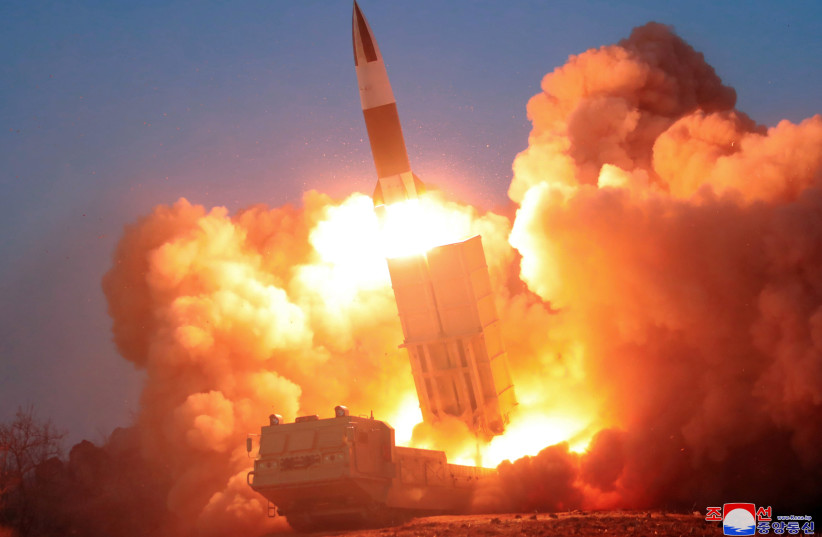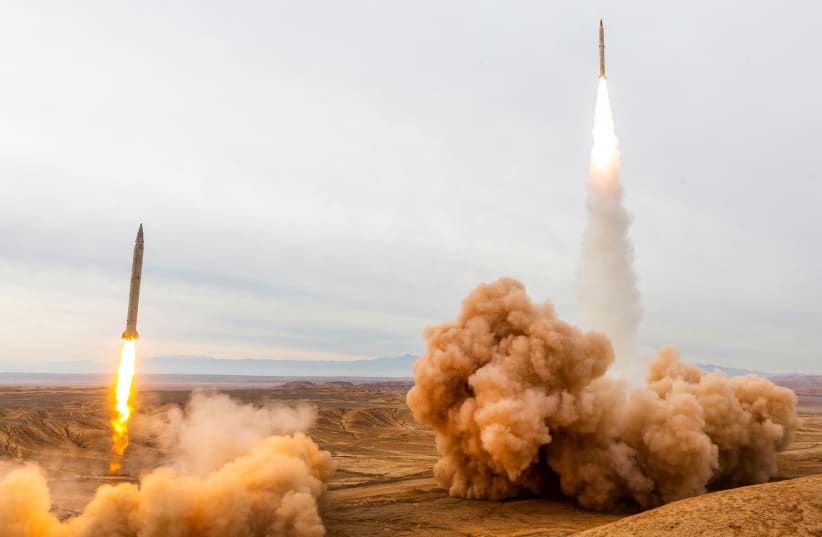Should anyone care about North Korea’s ballistic missile test on Wednesday?
As much of analyzing North Korean actions is at best educated guesswork, due to the opaque nature of the regime and the country, the answer is: It depends.
If Pyongyang just successfully launched a hypersonic missile for the second time, it could be an immediate reason for the US and possibly Israel to worry about the technology ever finding its way to Iran.
A hypersonic missile is much faster and takes a different flight path than a regular ballistic missile, flying part of its journey lower to the ground where it is harder to detect by radar and IS ALSO considered more maneuverable.
Put simply, a hypersonic missile is much harder to shoot down.


Russia has since 2019 been bragging that its hypersonic missiles give it an unstoppable method for potentially hitting the US.
So if North Korean leader Kim Jong Un is getting closer to a hypersonic missile that could hit America, it could change the entire dynamic between the countries.
Kim still has not proven that his missiles can reach the US.
Launching a missile from that far away requires an intercontinental ballistic missile (ICBM), which has to enter outer space and reenter the Earth’s atmosphere without malfunctioning FIRST from extreme cold, then extreme heat and vibrations, and other challenges.
There are also questions about whether the missile is really hypersonic or something in between a regular ballistic missile and a hypersonic one.
A regular ballistic missile might lessen the threat as it would be easier to shoot down in the event of an attack by Pyongyang.
But a number of experts believe the North has resolved the ICBM reentry issues, or given the number of almost completely successful tests they have done, achieving an ICBM that can hit the US is inevitable.
With estimates that the North could have anywhere from dozens to more than 60 nuclear weapons, if Kim really wanted to hit the US, many experts say it would be unlikely that American missile defense could shoot down everything he could throw at them.
FOR ISRAEL, Iran getting the transfer of hypersonic missile technology would be a threat – not just because the Islamic Republic has advanced farther than ever before toward nuclear weapons, but because it would also elevate the conventional ballistic missile threat.
Until now, Israeli assumptions have been that the three-level missile defense of Iron Dome, David’s Sling and the Arrow would be sufficient to defend the home front from most threats from Hamas and Iran, although this is less true for Hezbollah.
If Tehran gets its hands on hypersonic missile technology, Jerusalem might face a much scarier reality.
Of course, it has not been proven that North Korea has developed hypersonic weapons. And after all of the nuclear and missile cooperation between Iran and Pyongyang, Kim has never crossed certain lines that could lead back to him disastrously, such as giving Iran a turnkey ready-to-go nuclear missile.
So Kim might not risk the consequences of transferring such new technology.
After all of this, there is an entirely different way to look at the North’s test, especially juxtaposed with the ongoing nuclear negotiations in Vienna between Iran and the world powers.
Kim could be signaling to the Islamic Republic that it does not need to negotiate or play ball with the West.
His strategy of pushing forward with developing a nuclear arsenal has not escaped Western sanctions or raised his country out of economic depression or solved its food shortages.
But he has effectively ended the threat of regime change or anyone using military force against his country other than in response to a North Korean attack.
Kim has shown that putting your head down and expanding nuclear weapons capabilities is a strategy that can throw the West back on its heels.
Of all of the many rounds of Iran nuclear negotiations over the last two decades (the 2015 JCPOA was only one round), this is the moment when Tehran is most able to walk away from the table and cross the nuclear threshold – possibly before the world could decide how to react.
So will Iran be “inspired” by Pyongyang and walk away? Will the West get more intimidated about Tehran taking the North’s path and decide to grant additional concessions?
Kim’s latest missile test raises many questions without providing any clear answers.
But whatever those answers, none of them are good news for the US or Israel.
